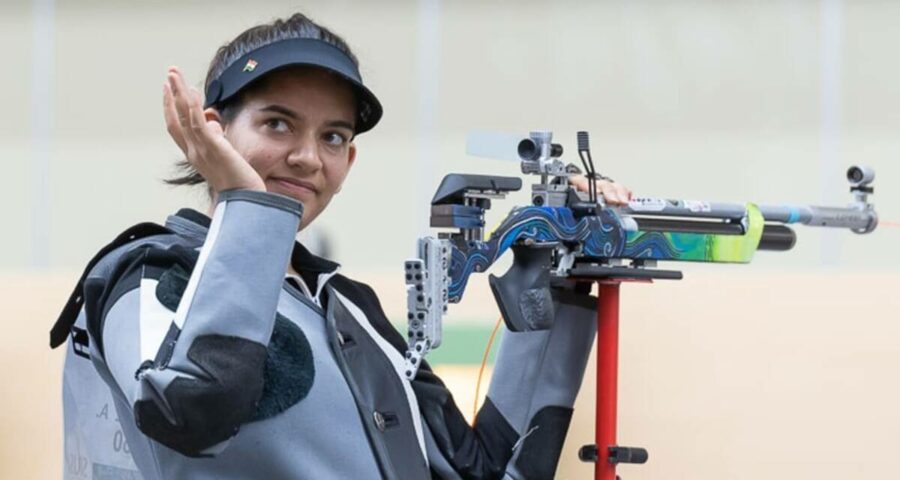The Chandigarh-native, a specialist in the 50m Rifle 3-Prone event, had won a World Championship silver medal in an event that wasn’t hers but more importantly — an event where Indians currently occupy three of the top 11 rankings.
When Anjum Moudgil won India’s first shooting quota for the Tokyo Olympic Games, in an event that wasn’t considered her own, the implication was that the 10m Air rifle event was now set to become a priority for her.
The Chandigarh-native, a specialist in the 50m Rifle 3-Prone event, had won a World Championship silver medal in an event that wasn’t hers but more importantly — an event where Indians currently occupy three of the top 11 rankings.
Three years later, Moudgil was given the news that on the basis of form and the National Rifle Association of India’s extensive qualification process, she, the current World No 3, was not going to be selected in the individual women’s 10m Air Rifle event and would instead have to participate in her own pet event, where she is currently ranked 27th.
The selection decision has meant that Moudgil’s training has now deviated to the 50m Air Rifle Three position event. “I cut down on the training time I’ll be giving to 10m now, focusing more on 3 positions. It does make a difference if I am playing in the main team or just the mixed event, I’ll be shooting much less shots in mixed team than I would in an 10m air rifle match so it makes a difference in my training timetable. The program was made by my coach and it did change after the selection, but the time is the only change we made,” she said to reporters in a press conference.
Moudgil’s coach Deepali Deshpande was part of the selection committee that made the final team list of the 16-member group headed to Tokyo this July and was in agreement on the 27-year-old’s selection in the three position event as well as the 10m Air Rifle mixed event.
Deshpande will now be with Moudgil in the training camp at Croatia at her pet event. When asked what were some of the aspects of the three position shooting event in an outdoor range to work on, Deshpande said that while her ward’s basics were clear, aspects such as the flow of shooting and what to expect from the mind and the body at certain points of the event was where the crux of her performance would lie.
“It’s about rhythm. She has to regain her flow of shooting. In three position, you shoot 40 shots. During those first 40 shots, there is a lot of anxiety and pressure. Training has to be done in such a way that the result is the same in every state of mind that the shooter is in. In all three stages of the event, you have to maintain performance… what happens after 10 shots… what happens after 20… how the body is reacting… After how many shots should she take a break and how to take a break — these are some of the things that make the flow of shooting better and will be things that need to be worked on. Because when pressure starts to build, it’s flow that helps,” said Deshpande to the Indian Express.
Competition time
The Indian shooting team and staff is set to depart for Croatia for a three-month camp on May 11 in a chartered flight. In Croatia, apart from training the Indian team will also take part in the European Championship in Osijek from May 20 to June 6.
The ISSF also announced a new World Cup that is set to be held in Croatia, another boost for the Indian shooting contingent. Now armed with a long training camp and two prime shooting competitions to regain form and match practice, Indian shooters have the ideal run-up before the liftoff that is the Tokyo Olympics.
Source: Read Full Article


